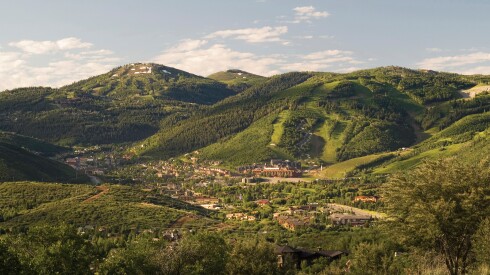As the world reopens to vaccinated travelers, the planet’s national parks offer a whole lot of peace and quiet in landscapes so astounding, you’ll easily trade the drama of the news cycle for the pageantry of nature’s show. In assembling this list, we looked first to the countries that have made it safe and possible to travel responsibly right now, with attention paid to where U.S. travelers can go. We don’t want to add to the crowds, so where we could, we called out underrated choices above the better-known options. And with that, we offer 10 national parks around the world we love:

White-faced capuchins resting during the midday heat in Corcovado National Park, Costa Rica
Photo by Salparadis/Shutterstock
Costa Rica: Corcovado National Park
For avid bird-watchers, wildlife lovers, and adrenaline hounds, the Costa Rican jungle is where the wild things are. And with 28 percent of the country protected in nature reserves and national parks, Costa Rica offers ample opportunity to spot endemic species and admire the country’s ecotourism initiatives. One of the dreamiest destinations is Corcovado National Park on the remote Osa Peninsula, bordering Panama on the Pacific coast. From the mangrove swamps to tropical rain forest, the park’s ecosystems harbor a dizzying 2.5 percent of the world’s biodiversity. Resplendent quetzals, poison arrow frogs, pumas, tapirs, ocelots, anteaters, hawksbill turtles, and bottlenose dolphins are among the animal residents in this paradise.

View at Prozurska luka on Mljet Island
Photo by novak.elcic/Shutterstock
Croatia: Mljet National Park
Generations of vacationers have heard the irresistible siren song of Dubrovnik, the “Pearl of the Adriatic.” But when you tire of the tourists crowding the Old Town, particularly in peak summer season, take refuge in a national park situated only 15 miles offshore. (A regular ferry service links the Dalmatian coast to its islands.) Blanketed in pine forest, Mljet Island offers sylvan escapes like cycling and hiking alongside such aquatic activities as kayaking and swimming in the famous saltwater lakes. Don’t miss the 12th-century monastery on the islet of Saint Mary, and when you start to feel overwhelmed by all the scenic beauty, the sandy beaches await.

The top of the volcano Cotopaxi
Photo by MarinaaaniraM/Shutterstock
Ecuador: Cotopaxi National Park
Ecuador’s 11 national parks range from Amazonian jungle and the marine marvels of the Galápagos Islands to the mountains of the Andes. Just an hour’s drive from Quito, Cotopaxi lures adventurers to one of the world’s highest active volcanoes, soaring 19,392 feet above the grasslands and flower plantations. When it last erupted in 2016, Cotopaxi was closed to climbing. Earlier eruptions (as in 1877) resulted in volcanic mudflows reaching the Amazon basin and the Pacific, more than 60 miles distant. Shrouded with snow, the crater-crowned volcano has a symmetrical cone shape—and one of the rare glaciers to be found at the equator.
Edward Piegza, founder of Classic Journeys, which is known for its luxury walking tours, describes the experience of exploring Cotopaxi: “Imagine reaching the park on a clear day. Your ‘wow’ moment is guaranteed as you come face to face with the immensity of Cotopaxi Volcano. . . . Because you’re on the equator this will be the closest point from the Earth to the sun. The native people look at it in an even more holistic context, receiving a feeling of intense energy and connection with the land that they call ‘Pachamama’ or Mother Earth. It’s easy to see why they refer to it this way, with the wild horses roaming the mountain slopes and Andean condors overhead.”

Lake of Roburent in the mountains of Mercantour National Park, between France and Italy
Photo by Alessandro Cristiano/Shutterstock
France: Mercantour National Park
Travel 30 miles from the Riviera and you can discover one of France’s last wild realms, a place of exceptional biodiversity and varied landscapes. There’s a red-rock canyon, alpine peaks, meadows bursting with wildflowers, gravity-defying villages perched on sheer rock cliffs . . . and did we mention the prehistoric rock art? A guided hike through the “Valley of Wonders” reveals Bronze Age petroglyphs carved into boulders. In addition to protecting wildlife like the rare bearded vulture, the largest raptor in Europe, Mercantour also celebrates its mountain culture, the long-time human settlement in an imposing natural environment. Flash floods caused by Storm Alex in autumn 2020 wreaked havoc on the park town of Saint-Martin-Vésubie, but rebuilding efforts show the resilience of a destination that for ages has shown the cohabitation of humankind and nature.
“In traversing Mercantour from north to south, you find a diversity of natural environments which you’d only find elsewhere by traveling thousands of kilometers,” says Aline Comeau, the park’s director. “From 0 to 3,000 meters in altitude in less than 80 kilometers, you encounter olive trees and Mediterranean lavender but also glacial relict species such as tundra hares, rock ptarmigan [a grouse-like bird also found in the Arctic], and the Berardia lanuginosa [a protected, high-altitude plant]. In Mercantour, in just a few kilometers, we pass from the Mediterranean zone successively to hilltop, mountain, subalpine, and alpine habitats—it is absolutely exceptional.”
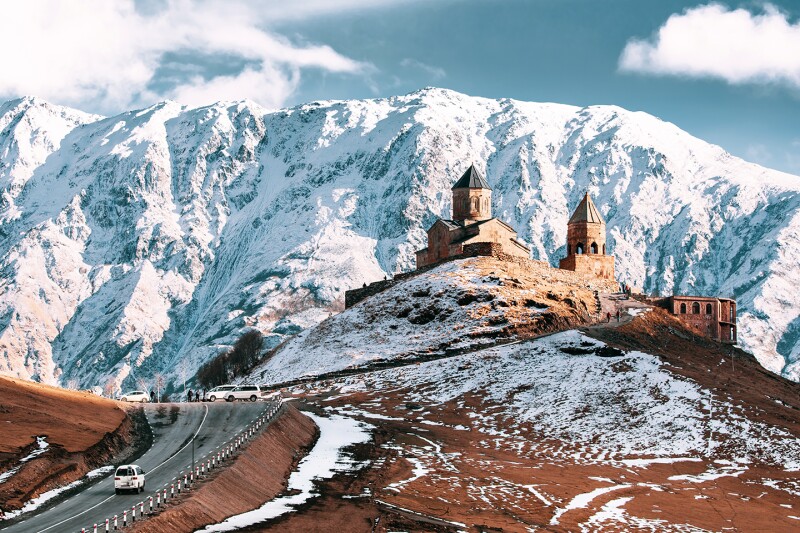
Stepantsminda, Gergeti, Georgia: Near church in early winter
Photo by Grisha Bruev/Shutterstock
Georgia: Kasbegi National Park
From glaciers to snow-capped peaks, the scenery of Georgia’s Caucasus Mountains arguably exceeds the drama of the Alps. What’s more, there’s a fascinating mountain culture, steeped in animism, myth, and legend. (Among them, it’s said Prometheus was chained to the rock here in the craggy Caucasus.) While some of Georgia’s isolated mountain regions are linked by vertiginous roads only passable in summer, Kasbegi is easily accessible from Tbilisi along the Georgian Military Highway. A popular base for hiking, mountaineering, and outdoor activities is the town of Stepantsminda (aka Kasbegi), above which rises Mount Kazbek, almost holy in its grandeur. The ascent to the 14th-century Gergeti Trinity Church—a famous Georgian symbol appearing in dramatic silhouette against the mountain backdrop—is a nice walk, but consider a longer hike to the Gergeti Glacier. And be sure to stock up on churchkhela before you set off. Georgians may be famous for their vodka-infused feasts, but this sausage-shaped snack, a string of nuts covered in pure grape gelatin, might be the original energy bar.
“Known for its remarkable natural beauty, Georgia’s Kazbegi National Park is an underrated but smart choice for American travelers looking to experience the best of the Caucasus Mountains,” says Adam Ang, a Scott Dunn travel expert. “Offering everything from . . . the Gergeti Trinity Church, hiking routes that pass through vast glaciers and the dramatic Gveleti Waterfall, to the 16th-century fortress complex of Ananuri, it’s guaranteed that travelers will leave completely enamored by the immersive experience.”
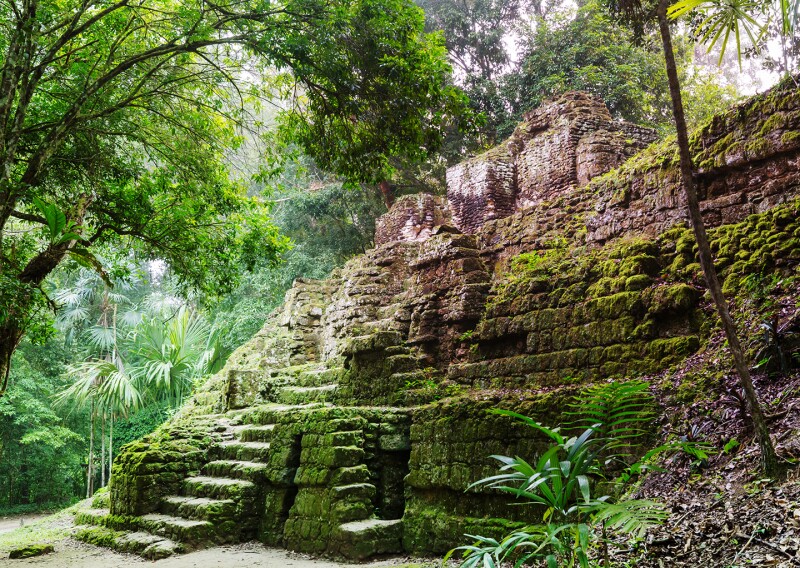
Ancient Mayan temples in Tikal National Park
Photo by Galyna Andrushko/Shutterstock
Guatemala: Tikal National Park
It’s hard to determine what’s the bigger draw: the lush jungle inhabited by jaguars, toucans, and pumas, or the spectacular Mayan temples, a relic of the great civilization that thrived here starting from the 6th century B.C.E. Tikal National Park is one of the few UNESCO World Heritage sites inscribed for both natural and cultural reasons. The stone ruins comprise the most significant Mayan archeological complex, providing cultural insights into the empire that once reigned supreme before the arrival of the conquistadors. As you stroll, sounds of birdsong and screaming howler monkeys float over the jungle, adding to the intrigue and mystery of Tikal.
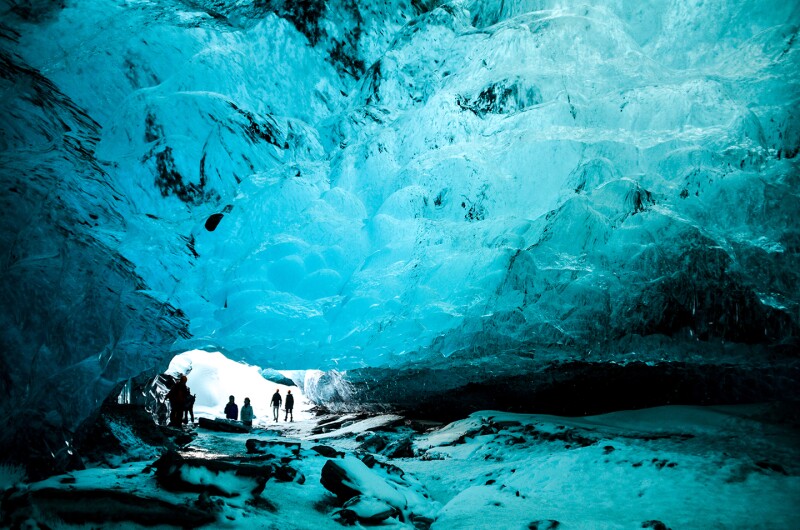
Ice cave tour at Vatnajökull National Park
Photo by Enken/Shutterstock
Iceland: Vatnajökull National Park
Why settle for one volcano when you can explore two? And icebergs? And ice caves and glaciers? Vatnajökull National Park isn’t just a park: This World Heritage site, formed by volcanic and glacial activity in southeastern Iceland, covers 14 percent of the country. After merging several smaller wilderness areas in 2008, Vatnajökull now extends from the Laki craters on the western side, where a historic 1783 eruption prompted a national famine and changed Europe’s climate for years, out to Jökulsárlón Glacier Lagoon, Iceland’s deepest lake. Here, on the southeastern edge of the park, chunks of Breiðamerkurjökull glacier—part of the namesake Vatnajökull ice cap, the largest ice cap by volume in Europe—have broken off as icebergs. Smaller pieces float out to sea or settle on nearby black-sand Diamond Beach, where they glisten like jewels fit for giants. —Laura Dannen Redman
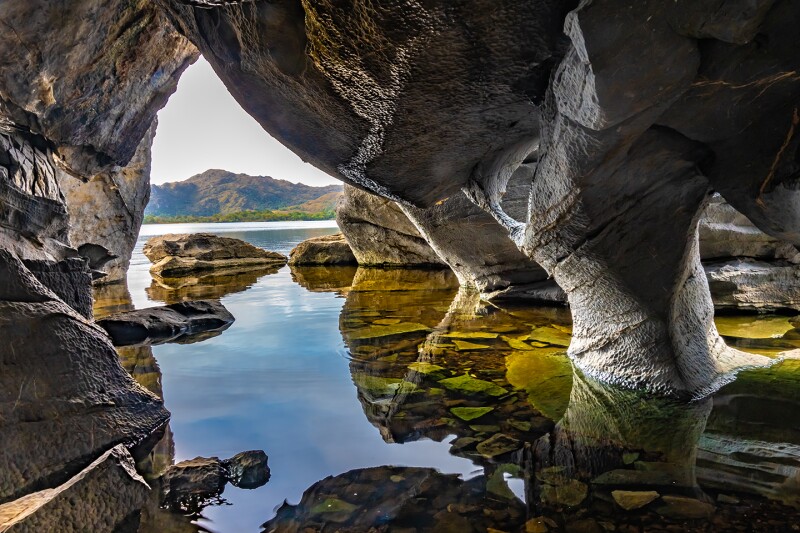
The Colleen Bawn Rock, Muckross Lake, Killarney National Park, County Kerry
Photo by LouieLea/Shutterstock
Ireland: Killarney National Park
Created in 1932 as Ireland’s first national park, Killarney is a 26,000-acre expanse of mountains, lakes, and woodlands declared a UNESCO Biosphere Reserve because of its diversity of habitat and species. The white-tailed sea eagle nearly went extinct in the early 20th century, while the country’s only herd of native red deer has been present in these parts since the last Ice Age. The park is home to Carrauntoohill, the country’s highest mountain at 1,000 meters (about 3,280 feet). And the forest—flush with oak, yew, and lichen—represents Ireland’s last remaining swath of native woodland.
“Killarney National Park boasts breathtaking scenery and outdoor activities and is easily accessible to people of all ages,” says Alison Metcalfe, executive vice president of Tourism Ireland (U.S. and Canada). “You are also at the gateway to the world famous Ring of Kerry, a magical route along the Wild Atlantic Way’s rugged coastline, which has been attracting visitors for generations.”

Akagera National Park in Rwanda
Photo by BGStock72/Shutterstock
Rwanda: Akagera National Park
While Volcanoes National Park is home to mountain gorillas, the wildlife stars of East Africa, Akagera—an unsung treasure near the Tanzanian border—is an inspiring comeback story, a symbol of Rwanda’s renaissance after the horrific genocide more than a quarter century ago. Nearly destroyed by deforestation and cattle grazing when refugees returned to a scarred country, Akagera today is a resilient model of sustainable tourism. The mosaic of savannah and wetlands offers wonderful opportunities to view the safari “big five” without the crowds. Now under the management of African Parks in partnership with the Rwanda Development Board, Akagera has seen the successful reintroduction of species like the black rhino.
“One of the things that makes Akagera National Park so special is that it boasts a wealth of biodiversity and a variety of habitats such as open plains, woodlands, lakes, papyrus swamp, and grassy low mountains,” says Luke Abbot, senior guide at Wilderness Safaris Magashi Camp. “This beautifully scenic area is home to over 450 species of birds and around 90 mammal species, including leopard, elephant, giraffe, and lions who are becoming well known for their fondness for climbing trees. There is also a low density of one of the world’s most iconic birds, the shoebill, one of which was recently spotted near Wilderness Safaris Magashi Camp. We are hopeful that ongoing research will reveal more information about these rare, elusive birds.
“A visit to Akagera National Park therefore provides an incredible savannah safari experience, the perfect combination with the opportunity to see mountain gorillas and golden monkeys in Volcanoes National Park.”

Ordesa y Monte Perdido National Park, Spain
Photo by Lukasz Janyst/Shutterstock
Spain: Ordesa y Monte Perdido National Park
There’s a primordial, otherworldly beauty to the Pyrenees, the craggy limestone peaks carved by glaciers, the cirques flanked by sheer rock cliffs threaded with waterfalls. Declared a national park in 1918, Ordesa is also part of a UNESCO World Heritage site straddling the French border. Ascending from valleys to alpine meadows dotted with edelweiss, Ordesa’s various habitats are home for brown bears, chamois, marmots, and golden eagles. The pièce de résistance is Mount Perdido, towering 11,000 feet above this wild and rugged topography. So isolated it was once only known to shepherds and smugglers, Ordesa promises an immersion in raw nature.
>>Next: It’s Not Too Late to Get Reservations at These Popular U.S. National Parks







